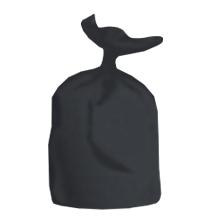Fireblight is a serious plant disease which can infect apples, pears and hawthorn as well as other members of the Roscaeae family, sub-family Maloideae (Pome fruits).
It is caused by the bacterium Erwinia amylovora. As the name suggests, infected plants can take on a scorched appearance.
Fireblight is established in the UK, France and most other EU Member States. It was confirmed as established in Guernsey in 2020.
There is no risk from Fireblight to human health.
What are the symptoms?
- Fireblight can affect all aerial (above ground) parts of the host plant. Symptoms include:
- Wilting and death of flower clusters following blossom infection.
- Wilting and death of young shoots: in some cases the tip of the shoot bends to form a characteristic "shepherd's crook". Infected leaves generally remain attached to the plant.
- Infected fruit turning brown or black; these become shrivelled but remain attached to the plant.
- Cankering - sunken areas of a stem, often with discolouration, caused by disease - which may spread to the main stem and kill the plant by girdling. Externally, the cankers are usually sunken in appearance and surrounded by irregular cracks in the bark. When the bark is removed, a reddish-brown discolouration of the underlying tissues may be seen.
- Some images of symptoms are shown below. Further images of symptoms can be seen on the European Plant Protection Organisation website at: https://gd.eppo.int/taxon/ERWIAM/photos.
Fireblight host plants (plants affected by Fireblight)
- Amelanchier (June Berry)
- Chaenomeles (Flowering Quince)
- Cotoneaster
- Crataegus (Hawthorn)
- Cydonia (Quince)
- Eriobotrya (Loquat)
- Malus (Apple)
- Mespilus (Medlar)
- Photinia davidianna
- Pyracantha (Firethorn)
- Pyrus (Pear)
- Sorbus (Rowan or Mountain Ash)
How does it spread?
- Fireblight can be introduced through the movement of infected plants which can be asymptomatic.
- Sticky bacterial ooze is produced in warm conditions and can be spread by insects, birds, small animals, wind and rain.
- Migrating birds arriving in Guernsey to feed on hawthorns and the fruit of other host plants are another potential route of infection.
- The bacteria can also spread on pruning tools. Tools should be disinfected between use on plants using household or garden disinfectants, alcohol based cleaners or a 10% bleach solution.
What treatments are available?
- There are no effective chemical measures available to control Fireblight. The only guaranteed method of eradicating this disease is through the removal of infected plants.
What should I do if I suspect my plants are infected?
- Suspected samples of infected flowers and shoots can be brought for diagnosis and advice, at no charge, to the States Analytical Laboratory, Longue Rue, St Martin, GY4 6LD. Tel: 01481 227612. Email: statesanalytical@gov.gg
- Samples should include the transition between dead and healthy plant material as this is where the disease will be most active.















